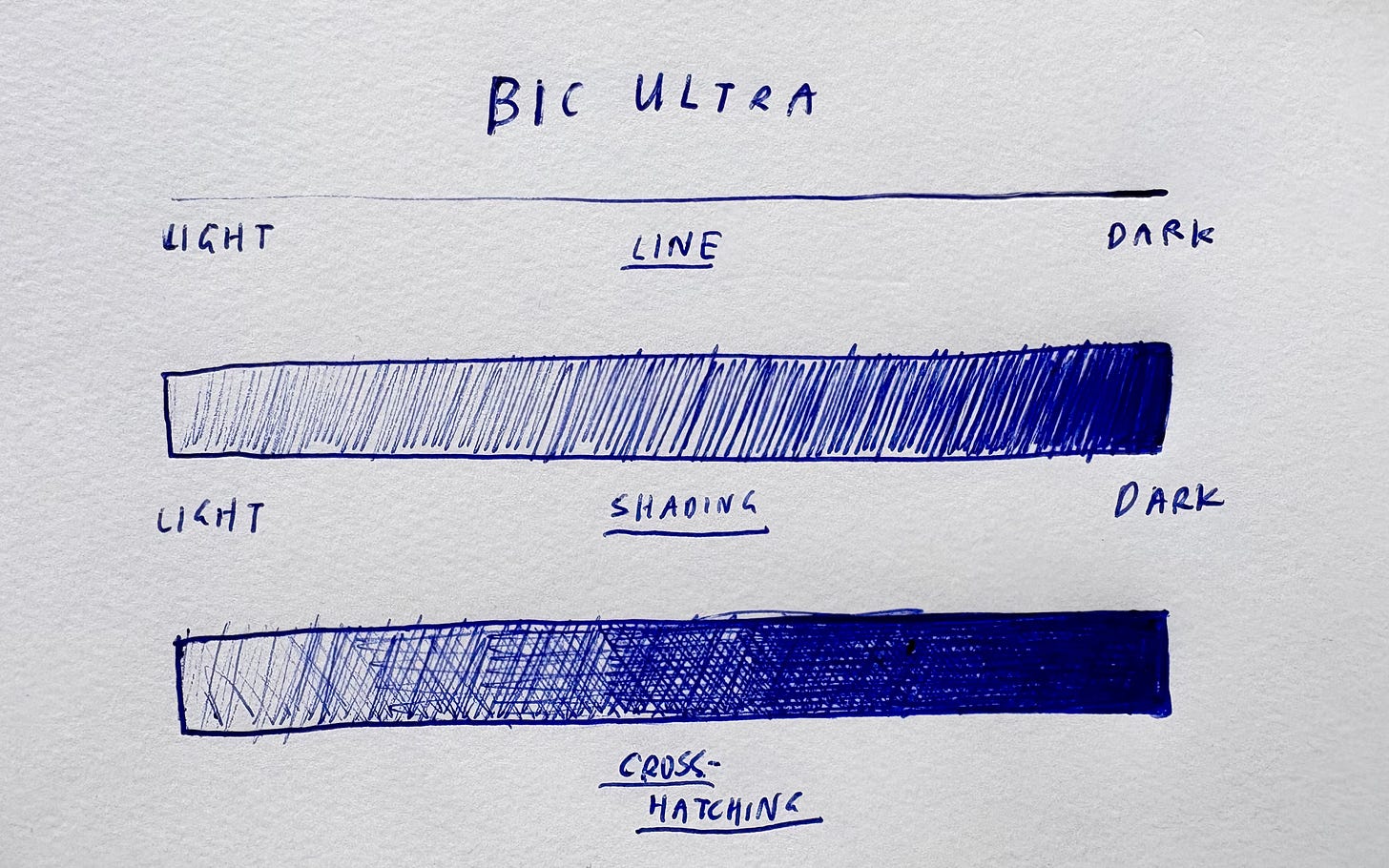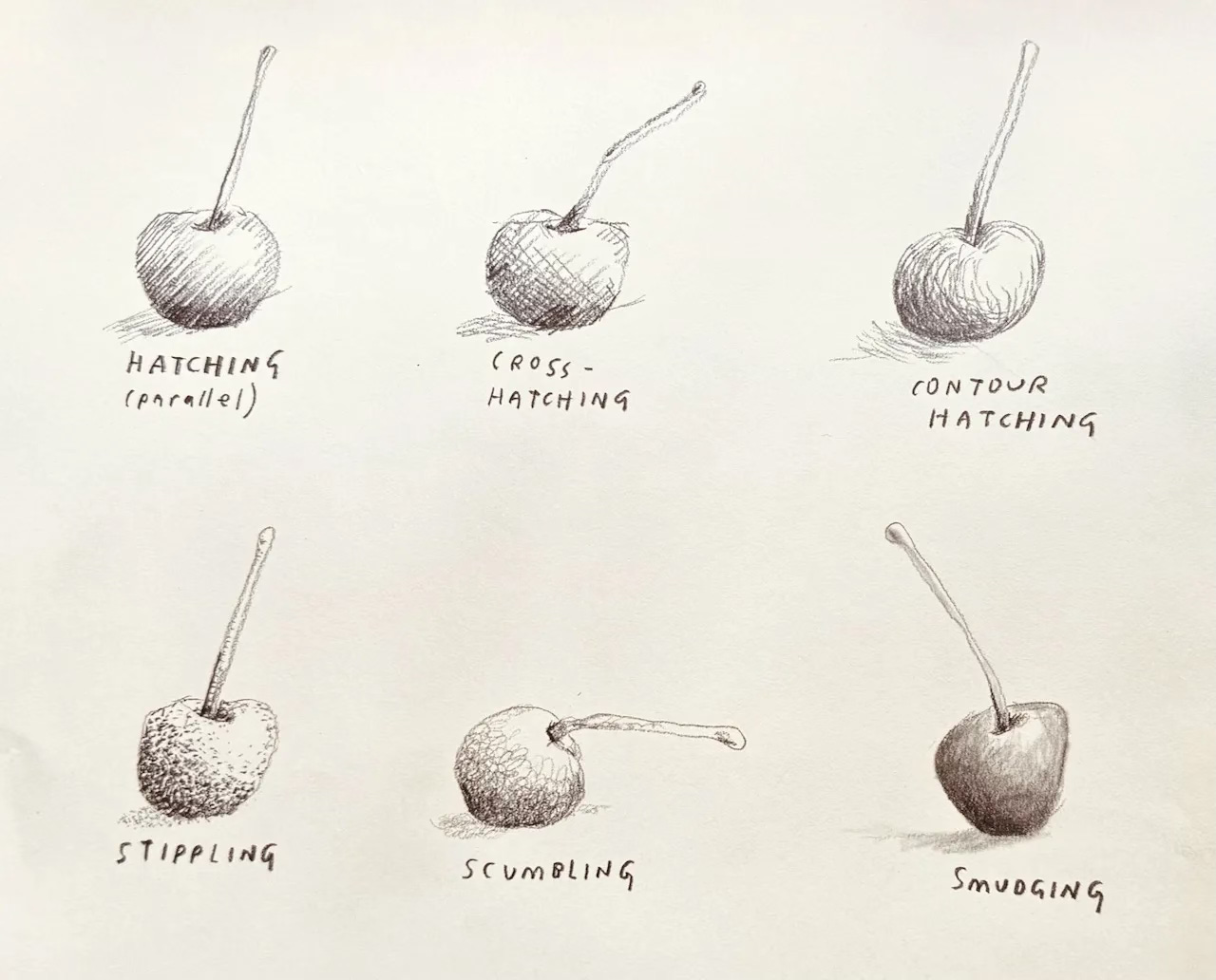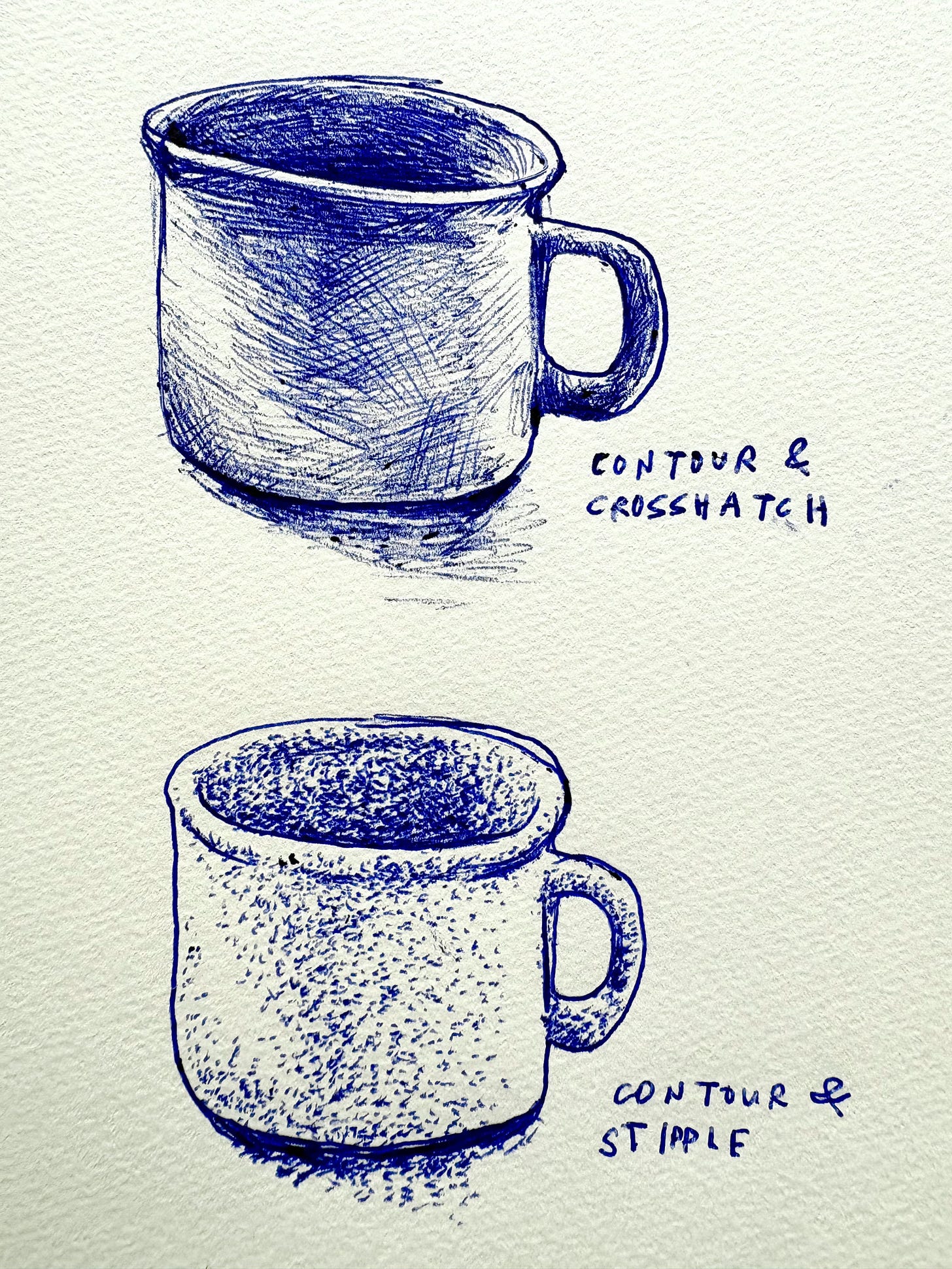Ode to the Humble Ballpoint Pen
Part One of Our New Series: "Overlooked Art Supplies"
Hello, DT GUTsters.
So happy you’re here.
Last week we talked with artist Tucker Nichols about noticing, unexpected aesthetics, and discovering art materials (and art!) in the most unlikely places.
Close looking and paying attention are core tenets of the DrawTogether ethos. Which, to be transparent, is another way of saying my ethos. I thought it would be a good idea to continue down this noticing/creativity/unexpected art supply path we kicked off with Tucker. He told us a story about finding an art medium in a livestock supply store. That made me wonder: what other unexpected art materials are hiding in plain sight? What overlooked art supplies are floating around our homes, waiting to be unleashed on the paper, canvas, or wall?? I’ll tell you friends: A LOT.
This week we kick off a series we’re calling….
Overlooked Art Supplies: The Series
In this series, we’re going to look at THREE ordinary materials that can be used as extraordinary art supplies. We are going to teach you a bit about an overlooked art supply — how it works, what other artists have done with it, and give you a primer on how to use it. Then we’ll speak with an artist who uses it as a primary medium, and get inspiration to make our own work using the medium. Sound good?
Great. Let’s do this. The first one is the ubiquitous mark maker…
Part 1: The Ballpoint Pen
Love them or hate them, I know you have a few hiding in your home, office, backpack, car, everywhere. If you’re like me, you often “unintentionally” pocket them at restaurants and doctors offices, only to toss them into a junk drawer back home. So rude. To the pen and the purveyor. And also a serious missed opportunity. While most of us associate ballpoints with the administration of daily life or branded corporate giveaways, I have news for you: this humble mark maker is capable of so much more.
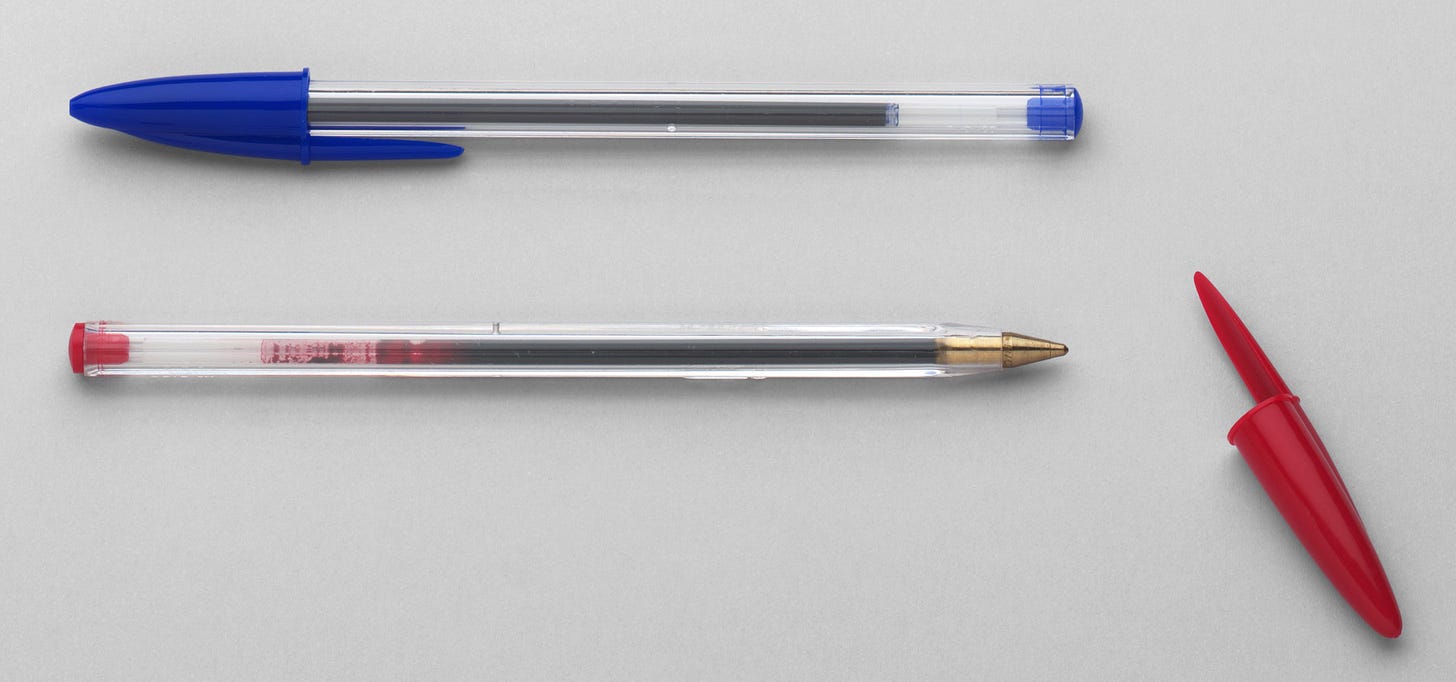
What exactly is a ballpoint pen?
I’ve developed a renewed appreciation for the ballpoint as artists have shown what you can really do with it. And the pen itself is a noteworthy design — the Bic Cristal is even in the collection of the MoMA!1
The modern ballpoint pen works by incorporating three key innovations:
a tiny ball bearing inside the pen’s tip — it rotates as you draw the pen across the paper
a viscous quick-drying ink which gets pulled by the rotating ball from the cartridge to the paper — even though they’re called ballpoint pens, it’s really the ink that was the critical development to making them work well!
plastic parts which could be produced more cheaply than those of previous metal pens and made the ballpoint affordable to the masses. (This part of the pen’s design is perhaps too successful as the United Nations estimates 9 billion plastic pens are thrown away every year.)
Masters of the Ballpoint Pen
One great thing about the ballpoint is how receptive it is to pressure. Unlike a rollerball pen like the Uniball Visions I tend to favor when drawing, ballpoints can create different values — light and dark — depending on how much pressure you exert. And because of that, you can layer colors, like blending red into blue. In that way, it’s more like a pencil than most pens.
Once you start playing around with them, you’ll be surprised to see how delicate a line you can get, and what detailed work you can create. Don’t take my word for it, tho. Let’s take a look at a few artists who create jaw-dropping representational and abstract artwork using just the humble ballpoint pen.
Nicolas V. Sanchez
Nicholas V. Sanchez started sketching in ballpoint on his subway commute and then began incorporating ballpoint more into his studio practice. He says, “The inability to erase… is both the beauty and challenge of drawing in ink.” I’ve featured him before in my lesson on sketchbooks. Prepare to pop your eyes back into your head!
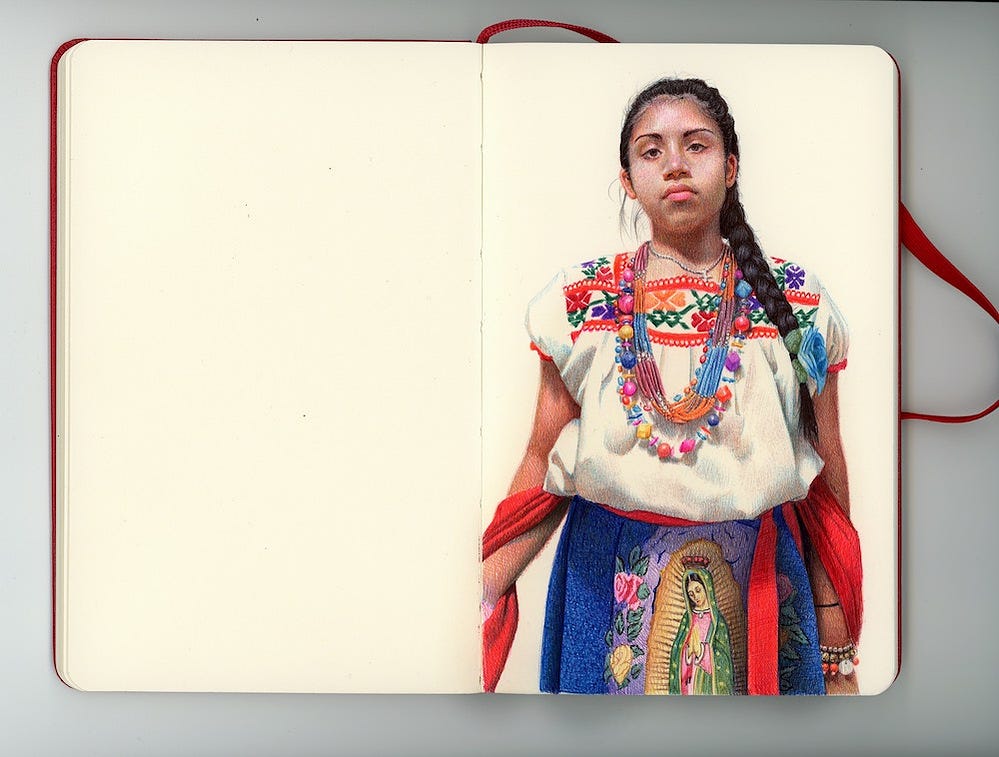
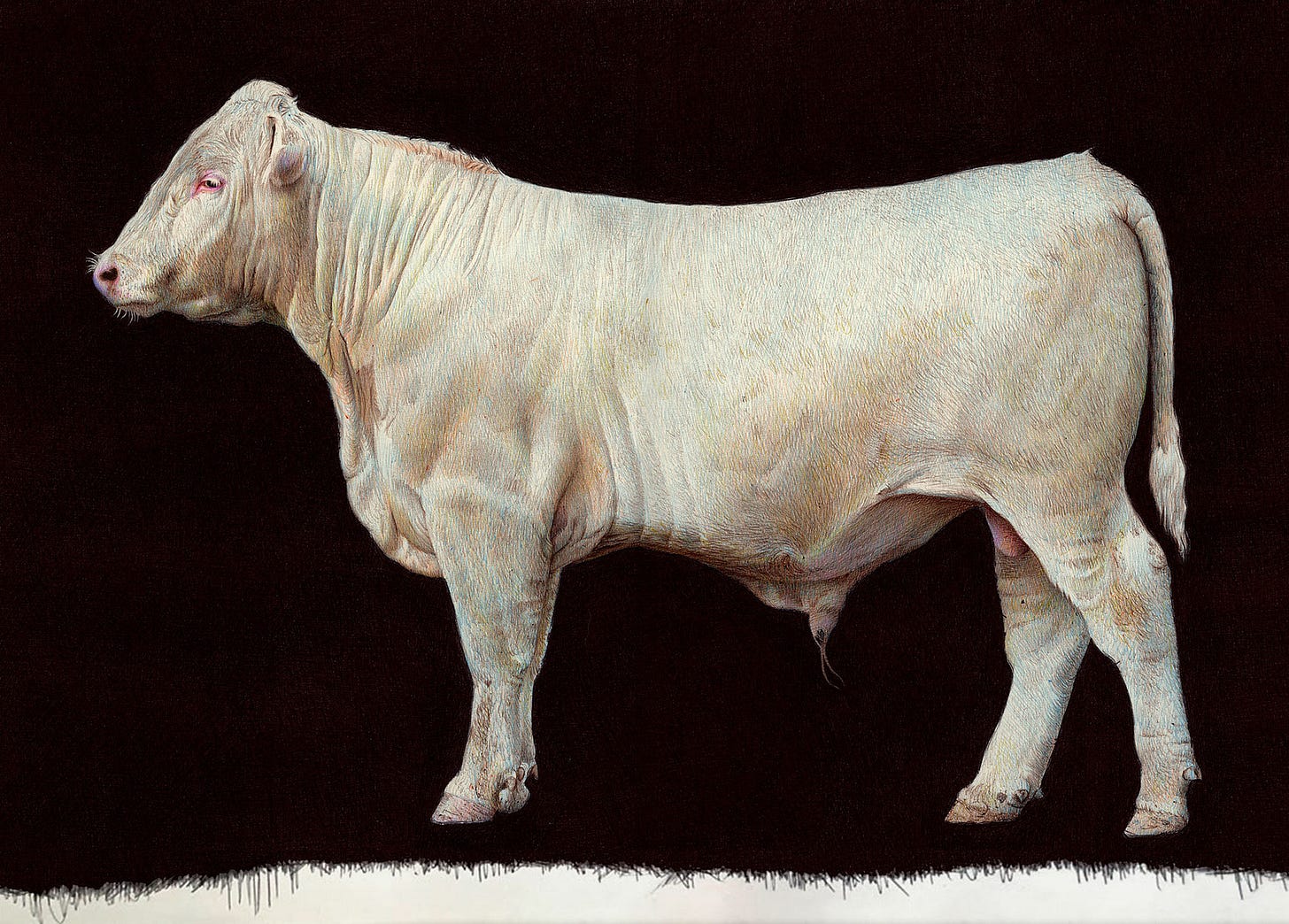
Guno Park
Guno Park also finds drawing inspiration on the New York subways, but he is probably best known for his drawings of animals (and in fact has been an instructor for animal drawing at New York Academy of Art for over a decade).
Here’s a time-lapse of Guno Park drawing an ape:
“Park is a line-maker whose medium is the ballpoint pen, something most people consider an instrument of practice reserved for doodling during meetings at work. We tend to treat them like loose change—forgotten at the bottom of drawers and bags. But such pens have an ability to blur the line between practice and finished product, between sketch and work of art.”
Adam Beal writing about Guno Park for The Brooklyn Rail
Elke Kunneman
Although she works with ballpoint pens, Elke Kunneman describes her work as being driven by her interest in light and time. As she layers ink on the page with scribbles and signatures, she says, “The light arises naturally. … I really enjoy discovering that context is necessary to see light. If you look purely at light and you don’t have context, you probably won’t see light.” The contrast between the ink and the paper make the emptier spaces seem to glow. So cool!
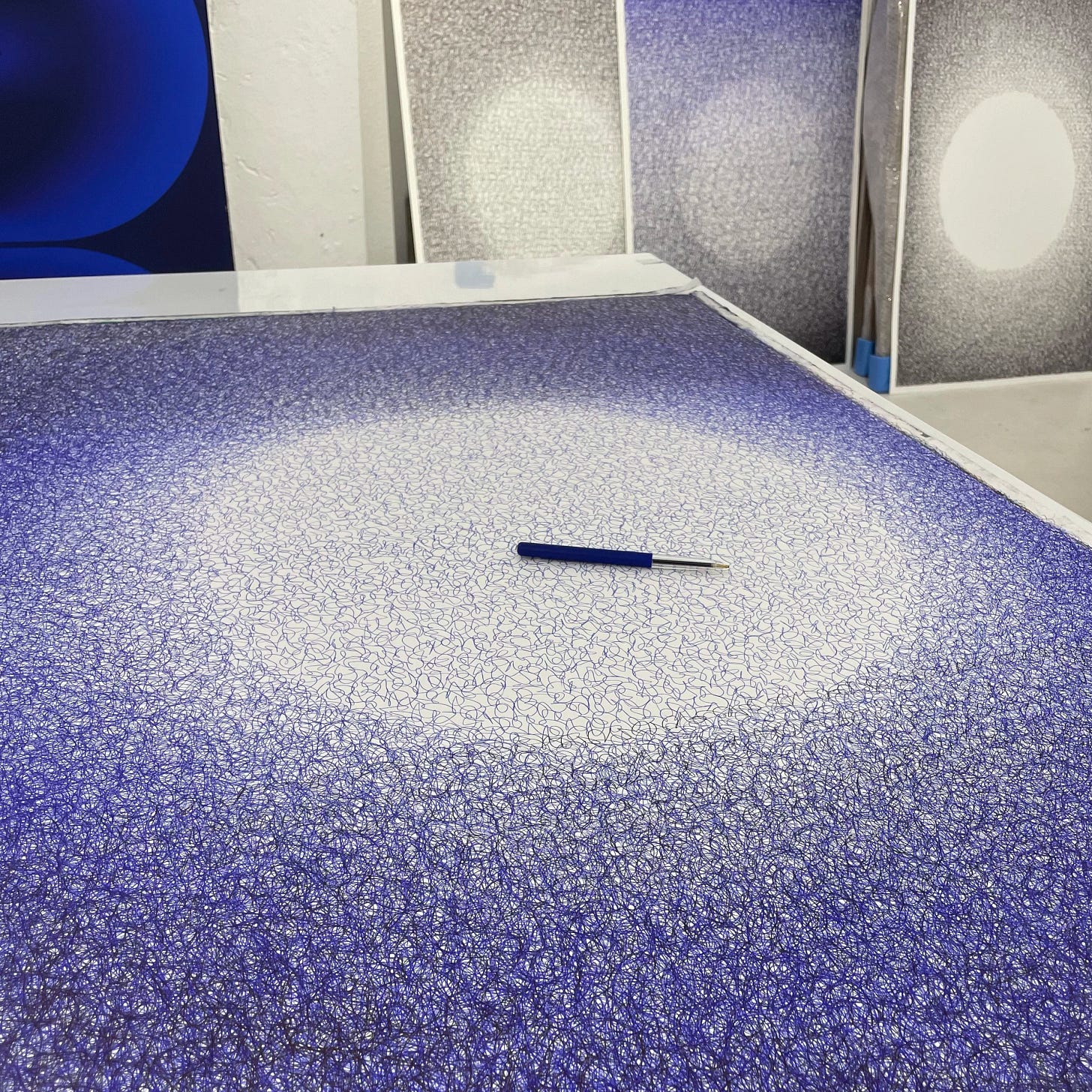
Il Lee
Il Lee is one of the best-known artists to use ballpoint as the basis for his art. While attending the Pratt Institute for graduate school, he focused on printmaking and etching. His interest in the sharp line created by a needle transitioned over to his ballpoint works.
In an interview, he laughed as he recalled a critic saying something like, “You know, that Il Lee, he’s a Korean artist in New York – Jackson Pollock was a fighter with paint and a bucket – and Il fights with his thin ballpoint pen!”
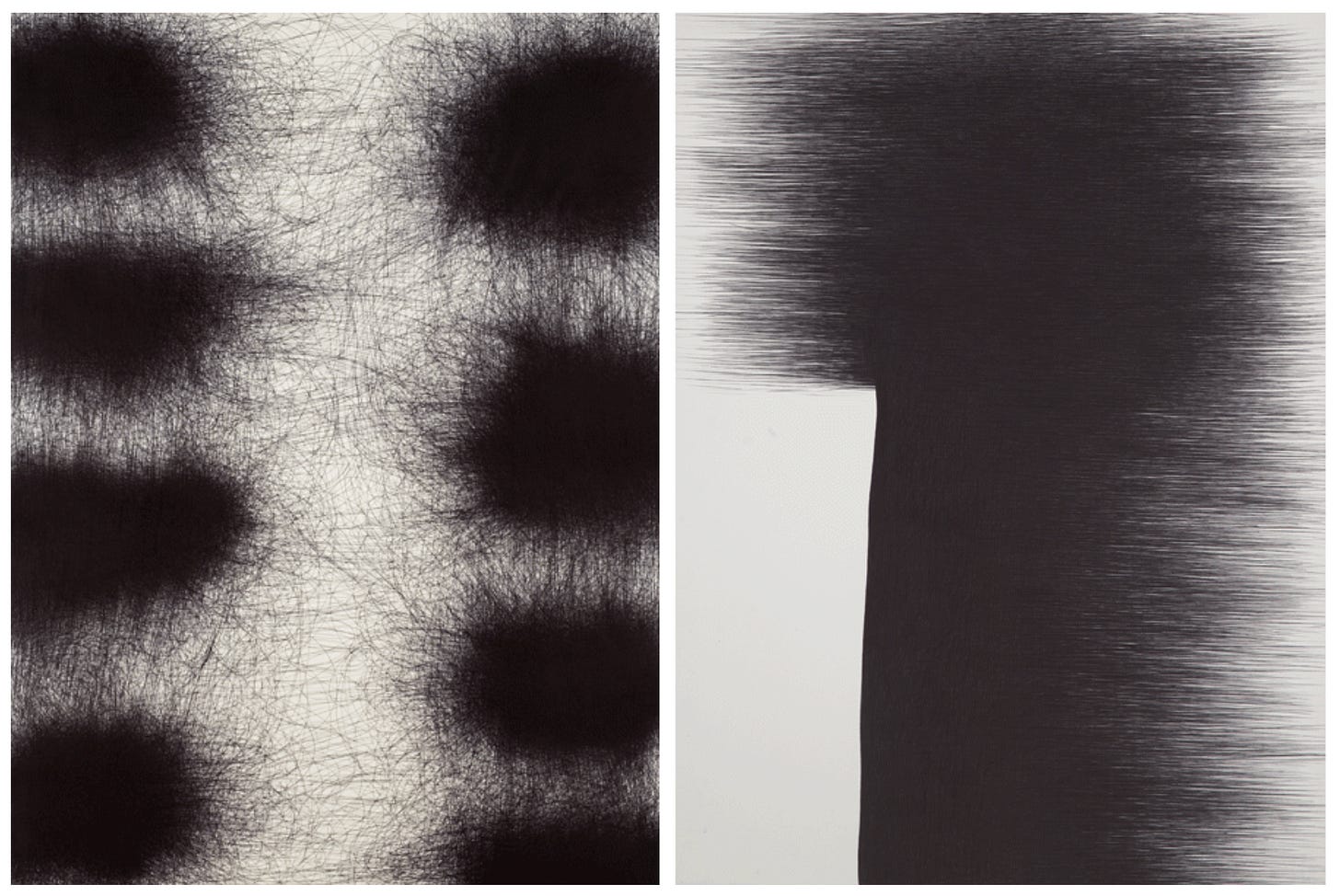
Carine Brancowitz
Carine Brancowitz takes a more illustrative approach to her ballpoint drawing. While she does not work exclusively in ballpoint, the pen is central to her work. What I love is how she manages to combine such clean lines with incredible textures.
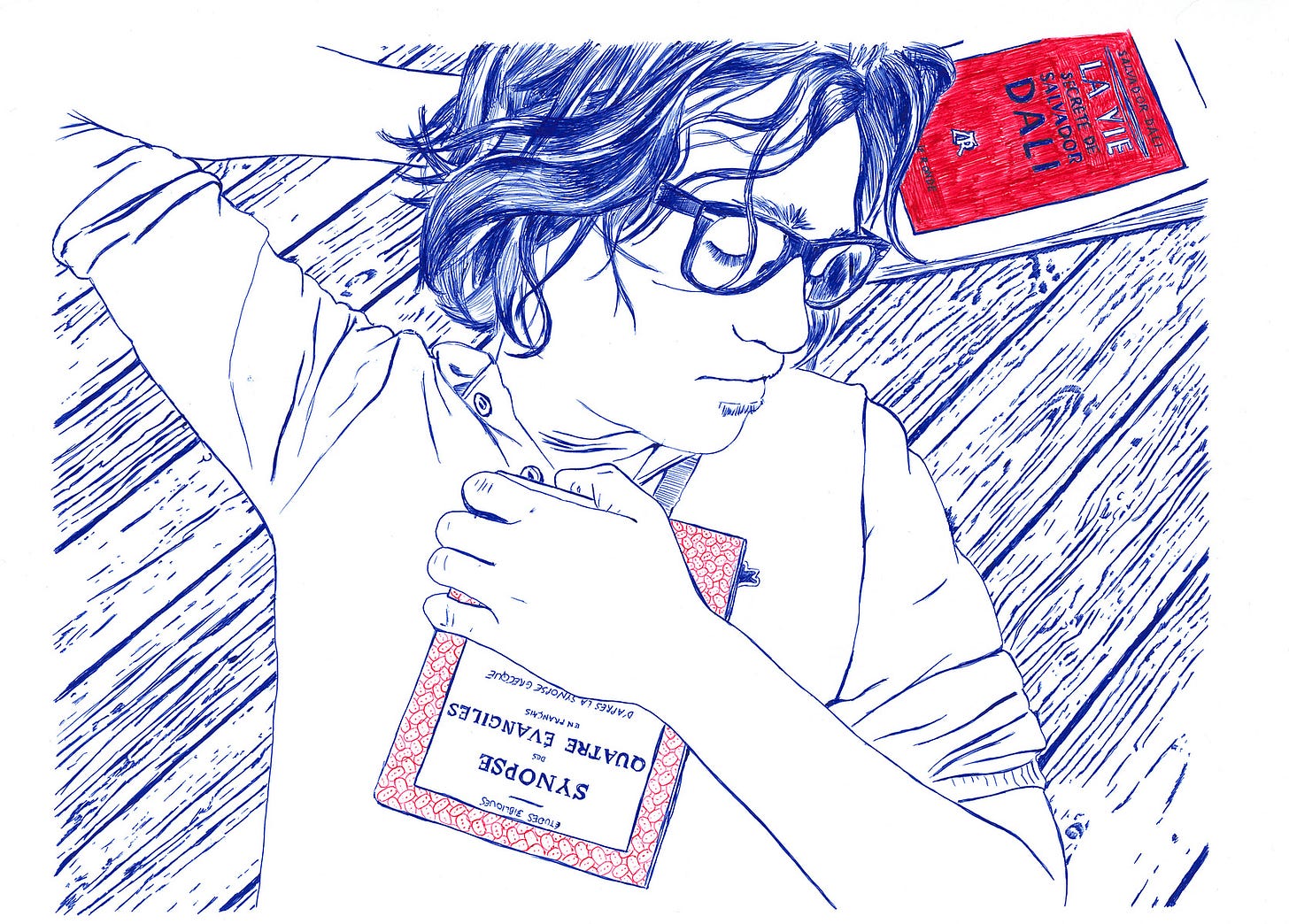
Emil Ferris
Emil Ferris wrote and illustrated an entire graphic novel titled My Favorite Thing Is Monsters with mainly ballpoint pens! The main character in her novel My Favorite Thing Is Monsters is a young girl who believes she is a werewolf and is trying to solve the murder of her upstairs neighbor. The novel appears as her sketchbook and diary and all the illustrations take place on notebook paper.
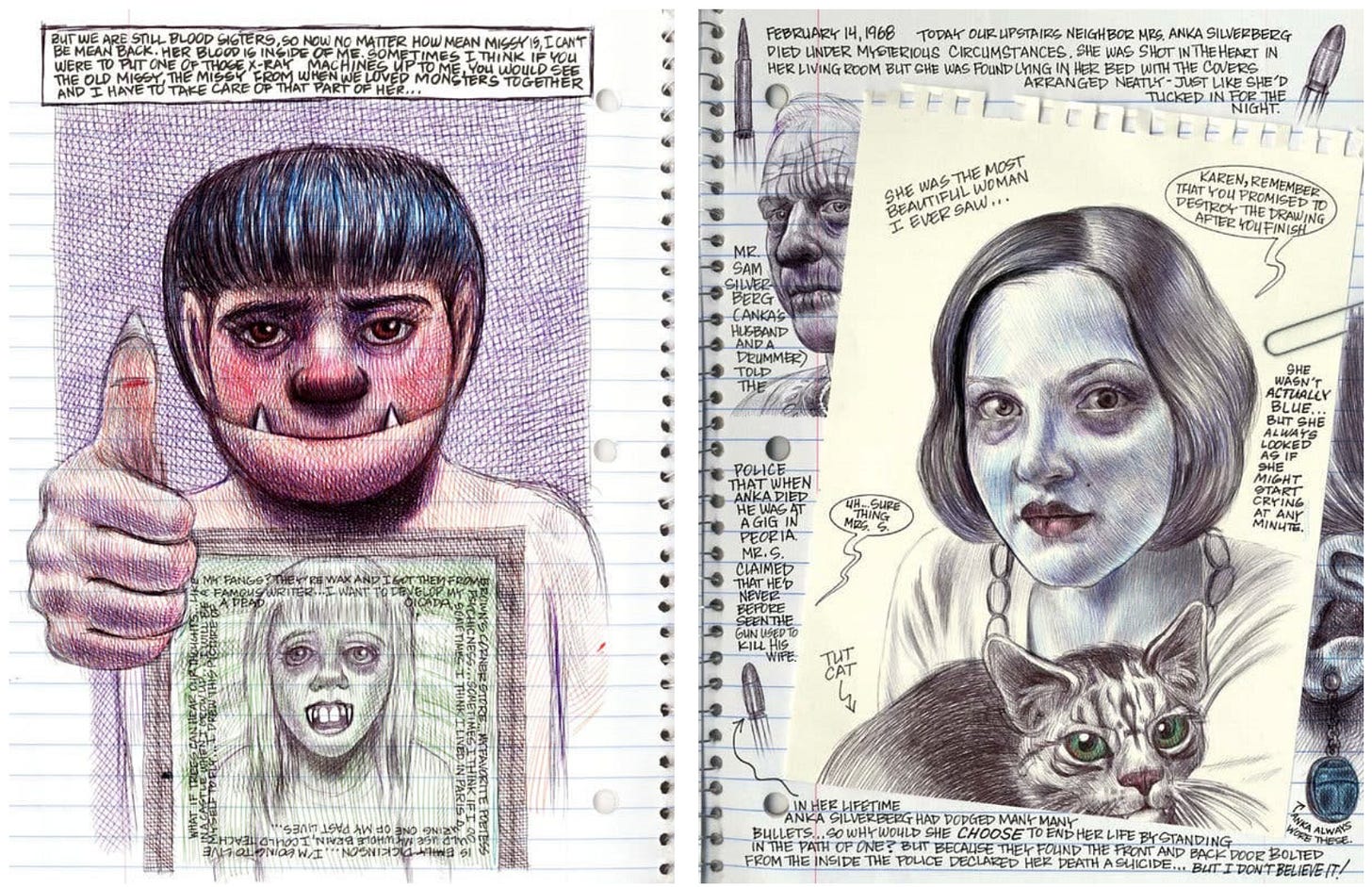
She has received wide acclaim both for her storytelling and her intricate drawings, and her personal story is just as compelling. In 2002, she found herself paralyzed after contracting the West Nile Virus, and as an artist, she was devastated to find this also affected her drawing hand. However, she was determined to regain her mobility — she worked with her daughter to duct tape a quill pen to her hand to make her first illustration after being hospitalized and slowly began to recover her drawing abilities despite chronic pain.
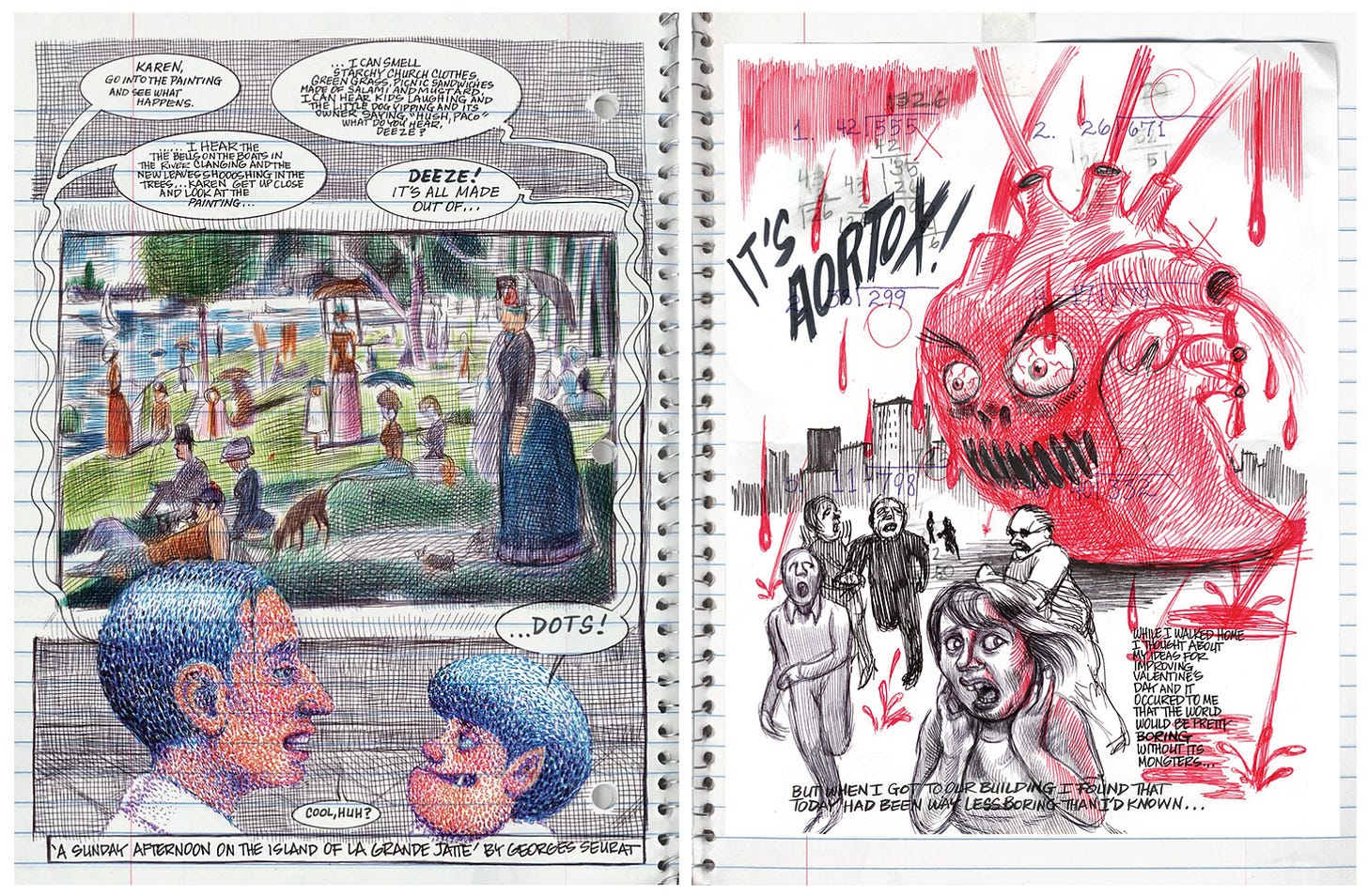
All hail the humble ballpoint pen.
Now that we’ve seen what can be done with it, let’s learn a little about how to draw with it ourselves.
Ballpoint Pen Basics
In some ways, the ballpoint pen is more like a pencil than other pens are: you can control the amount of ink that comes out of the pen with pressure. Less pressure = lighter line. More pressure = darker line.
You can also build value by layering, like we do with other pens. Remember this lesson on building value with graphite pencils?
We can apply it to the ballpoint pen, too. You can layer marks to build value, including hatch marks (in any direction, parallel, cross, or contour, stippling (dots) and scumbling (scribbling). Smudging? Not so much, but hey, give it a try and report back!
If you want to learn by watching, check out this phenomenal introduction to all this from Guno Park over on the Artists’ Network.
Also, COLOR. Using the techniques above, you can layer colors to create a blended effect. (See Nicolas’s work above!)
And that, my friends, is your intro to what the humble ballpoint pen can do. Now it’s OUR TURN to try.
Assignment
I have a hunch you know what this week’s assignment might be. There’s really only one way to learn to do something new, and that’s…
Keep reading with a 7-day free trial
Subscribe to DrawTogether with WendyMac to keep reading this post and get 7 days of free access to the full post archives.



